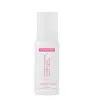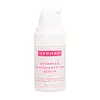What's inside
What's inside
 Key Ingredients
Key Ingredients

 Benefits
Benefits

 Concerns
Concerns

No concerns
 Ingredients Side-by-side
Ingredients Side-by-side

Water
Skin ConditioningCaprylic/Capric Triglyceride
MaskingDiheptyl Succinate
EmollientCapryloyl Glycerin/Sebacic Acid Copolymer
Skin ConditioningSodium Polyacryloyldimethyl Taurate
Emulsion StabilisingHydrogenated Polydecene
EmollientTrideceth-10
CleansingGlycerin
HumectantIsododecane
EmollientGlyceryl Stearate
EmollientPEG-100 Stearate
Kojic Dipalmitate
EmollientTriethanolamine
BufferingGlycolic Acid
BufferingCetearyl Alcohol
EmollientCeramide EOP
Skin ConditioningCeramide Ns
Skin ConditioningCeramide NP
Skin ConditioningCeramide As
Skin ConditioningCeramide AP
Skin ConditioningTerminalia Ferdinandiana Fruit Extract
AntioxidantGlycyrrhiza Glabra Root Extract
BleachingSodium Hyaluronate
HumectantLaminaria Digitata Extract
Skin ProtectingSilica
AbrasiveCetyl-Pg Hydroxyethyl Palmitamide
Skin ConditioningPentaerythrityl Tetra-Di-T-Butyl Hydroxyhydrocinnamate
AntioxidantSodium Metabisulfite
AntioxidantPhenoxyethanol
PreservativeEthylhexylglycerin
Skin ConditioningWater, Caprylic/Capric Triglyceride, Diheptyl Succinate, Capryloyl Glycerin/Sebacic Acid Copolymer, Sodium Polyacryloyldimethyl Taurate, Hydrogenated Polydecene, Trideceth-10, Glycerin, Isododecane, Glyceryl Stearate, PEG-100 Stearate, Kojic Dipalmitate, Triethanolamine, Glycolic Acid, Cetearyl Alcohol, Ceramide EOP, Ceramide Ns, Ceramide NP, Ceramide As, Ceramide AP, Terminalia Ferdinandiana Fruit Extract, Glycyrrhiza Glabra Root Extract, Sodium Hyaluronate, Laminaria Digitata Extract, Silica, Cetyl-Pg Hydroxyethyl Palmitamide, Pentaerythrityl Tetra-Di-T-Butyl Hydroxyhydrocinnamate, Sodium Metabisulfite, Phenoxyethanol, Ethylhexylglycerin
Water
Skin ConditioningAnanas Sativus Fruit Extract
Skin ConditioningTranexamic Acid
AstringentGlycyrrhiza Glabra Root Extract
BleachingKojic Acid
AntioxidantPhenoxyethanol
PreservativeSodium Hyaluronate
HumectantMelatonin
AntioxidantAloe Barbadensis Leaf Extract
EmollientCurcuma Longa Root Extract
MaskingHydroxyethylcellulose
Emulsion StabilisingPanthenol
Skin ConditioningSodium Metabisulfite
AntioxidantEthylhexylglycerin
Skin ConditioningSodium Gluconate
Skin ConditioningCitric Acid
BufferingWater, Ananas Sativus Fruit Extract, Tranexamic Acid, Glycyrrhiza Glabra Root Extract, Kojic Acid, Phenoxyethanol, Sodium Hyaluronate, Melatonin, Aloe Barbadensis Leaf Extract, Curcuma Longa Root Extract, Hydroxyethylcellulose, Panthenol, Sodium Metabisulfite, Ethylhexylglycerin, Sodium Gluconate, Citric Acid
Ingredients Explained
These ingredients are found in both products.
Ingredients higher up in an ingredient list are typically present in a larger amount.
Ethylhexylglycerin (we can't pronounce this either) is commonly used as a preservative and skin softener. It is derived from glyceryl.
You might see Ethylhexylglycerin often paired with other preservatives such as phenoxyethanol. Ethylhexylglycerin has been found to increase the effectiveness of these other preservatives.
Glycyrrhiza Glabra Root Extract is an extract of the roots of Licorice. It has been found to have several benefits such as skin hydrating, conditioning, and soothing.
One component, glabridin, has extra potent antioxidant and soothing properties. It has also been found to block pigmentation from UVB rays in guinea pigs.
Licorice Root also contains a flavonoid. Flavonoids are a natural substance from in plants. Flavonoids also have antioxidant properties.
Another component, glycyrrhizin, has been found to have anti-inflammatory and antimicrobial benefits. This may make licorice root extract effective at treating acne. However, more research is needed to support this.
Liquiritin is one of the flavone compounds found in licorice. It has been found to help lighten skin by preventing tyrosinase from reacting with tyrosine. When the two react, protein is converted to melanin. Melanin is the substance in your body that gives your features pigmentation.
Learn more about Glycyrrhiza Glabra Root ExtractPhenoxyethanol is a preservative that has germicide, antimicrobial, and aromatic properties. Studies show that phenoxyethanol can prevent microbial growth. By itself, it has a scent that is similar to that of a rose.
It's often used in formulations along with Caprylyl Glycol to preserve the shelf life of products.
Sodium Hyaluronate is hyaluronic acid's salt form. It is commonly derived from the sodium salt of hyaluronic acid.
Like hyaluronic acid, it is great at holding water and acts as a humectant. This makes it a great skin hydrating ingredient.
Sodium Hyaluronate is naturally occurring in our bodies and is mostly found in eye fluid and joints.
These are some other common types of Hyaluronic Acid:
Learn more about Sodium HyaluronateSodium metabisulfite is also known as Sodium Pyrosulfite. It is a preservative, antioxidant, and disinfectant.
As a preservative, it helps stabilize cosmetic formulas without affecting their color or scent.
Water. It's the most common cosmetic ingredient of all. You'll usually see it at the top of ingredient lists, meaning that it makes up the largest part of the product.
So why is it so popular? Water most often acts as a solvent - this means that it helps dissolve other ingredients into the formulation.
You'll also recognize water as that liquid we all need to stay alive. If you see this, drink a glass of water. Stay hydrated!
Learn more about Water